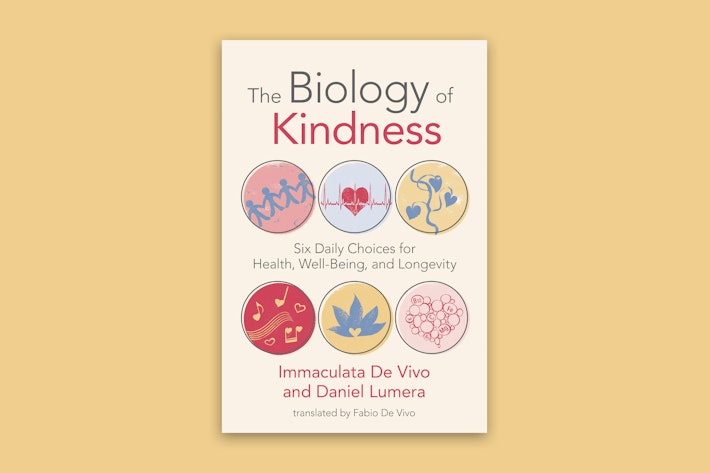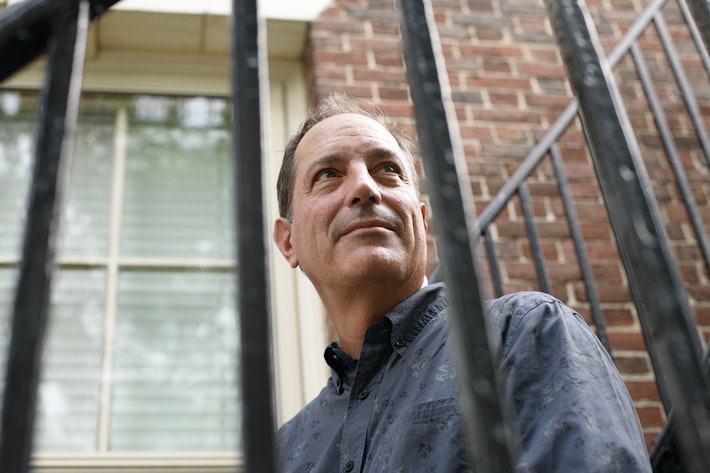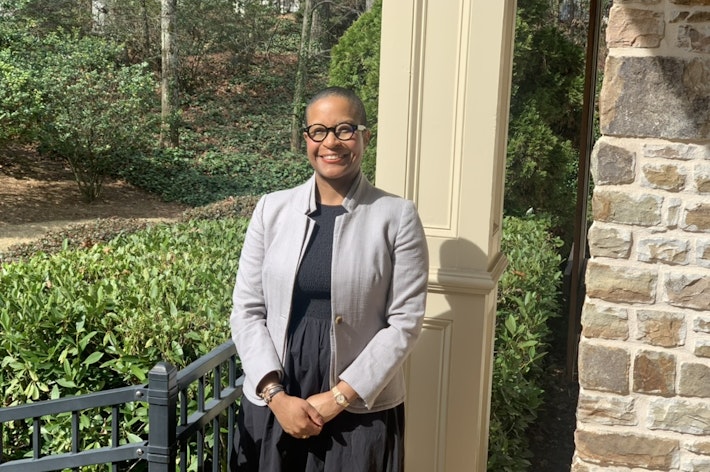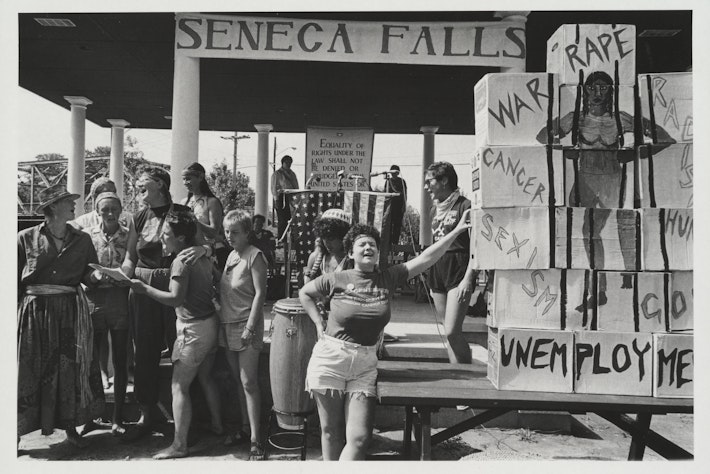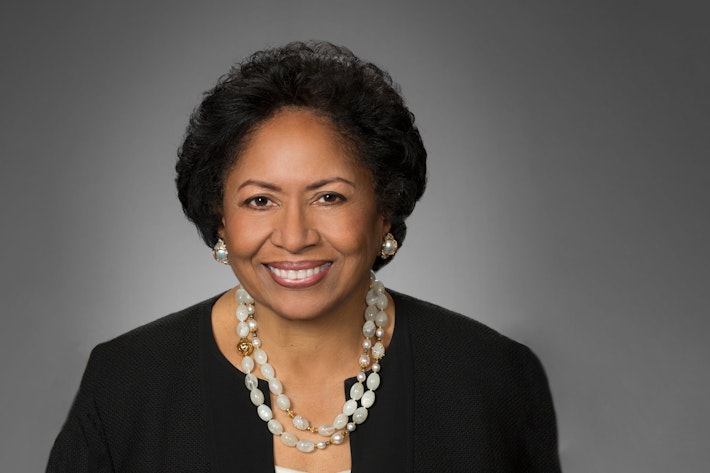Here Lies Darby Vassall
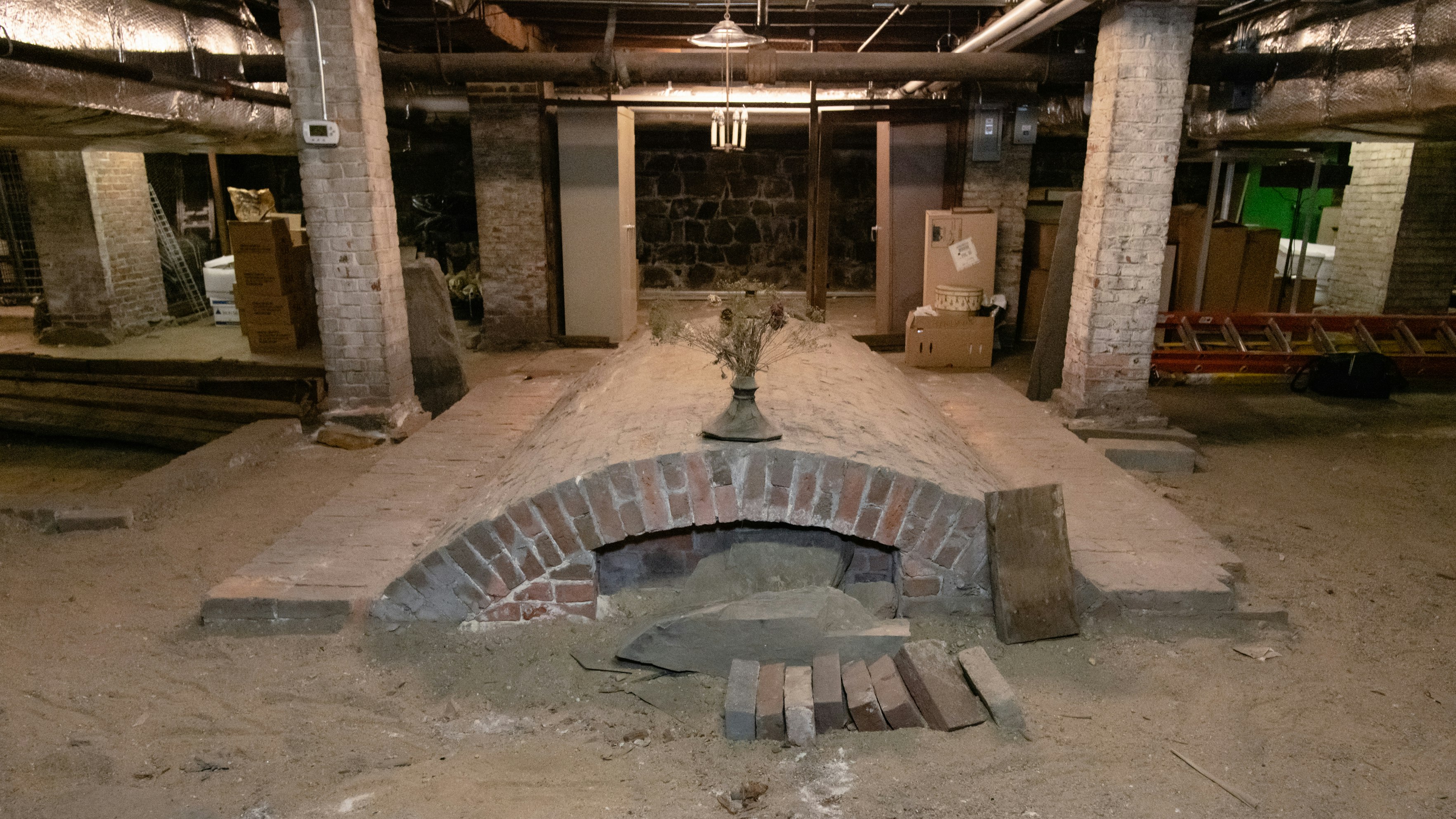
Why would a former slave wish to be buried in the same tomb as his family’s enslaver?
Entering the sanctuary of Christ Church in Cambridge on a bright fall day, visitors are immediately struck by sunlight pouring through 16 windows and 400 panes of ancient glass, bathing the austere white room in glowing warmth.
Christ Church is one of Cambridge’s oldest and most historically significant churches. George Washington was here with his wife Martha on New Year’s Day 1775, months before the United States declared independence, according to a plaque on a front-row pew. One-hundred and ninety-two years later, in April 1967, after Harvard University officials would not allow him to speak on campus, Martin Luther King Jr. delivered a speech here calling for peace in Vietnam.
“There comes a time,” he said, “when silence is betrayal.”
Throughout the church, names like Apthorp, Batchelder, and Serjeant are honored on marble plaques, long-gone men of wealth who benefitted from the slave trade.
One of the most prominent of these congregational founders is Henry Vassall, who had the rare distinction of being buried below the sanctuary floor in a basement crypt. What no plaque tells you is that along with Vassall’s remains also lie those of a man named Darby Vassall.
Darby Vassall was born on May 15, 1769, to Tony and Cuba Vassall, who had both been enslaved by Henry. At the time of Darby’s birth, he and his mother legally belonged to Henry’s nephew, John Vassall (AB 1757). After the outbreak of the Revolutionary War, John, a loyalist, gave Darby, then age five or six, to a fellow Christ Church parishioner and soon thereafter fled to England.
Darby’s presence in the crypt was both known and unknown to Christ Church parishioners, most of whom have two questions: Why would he want to be buried with the people who enslaved his family, and why has his presence been kept in the dark for so long?
Tony and Cuba, who since 1769 had been enslaved in different households, reunited their family after John Vassall fled the colony and moved into a building on his abandoned property, which today is the Longfellow House National Historic Site. This reunification included their daughter, Flora, who Tony had traveled to Billerica and, in Penelope Vassall’s name, paid £20 to purchase and manumit her.
During the Siege of Boston, in 1775, then-General and future-President George Washington occupied the house to use as his base of operations. Darby, age six at the time, would later tell a story about declining Washington’s offer of unpaid work. “General Washington,” he recalled, “was no gentleman, to expect a boy to work without wages.”
In 1780, Tony petitioned the state legislature for the title to the small house and plot of land he had been farming on the estate during the war. His petition was denied. He was, however, granted an annual pension of £20 from the estate’s sale. After the Massachusetts Supreme Judicial Court ruled slavery unconstitutional in 1783, Darby’s parents purchased property not far from Harvard’s campus. Tony also operated a stable in what would become the free Black community of Lewisville in Cambridge.
Darby ultimately moved to Boston, where he purchased property not far from the State House and became an avid advocate for equal rights for Blacks locally and abolition nationally.
A founding member of the African Society, a mutual aid association for free Black Bostonians, he was also one of six people who petitioned the state legislature to provide funds to educate Black children. The African School Association named in the petition was a forerunner of the Abiel Smith School, which is today part of the Museum of African American History in Boston.
Darby also was an active supporter of the New England Anti-Slavery Society and lent his time, money, and prominent personal connections to the cause. His name appears alongside the signatures of the renowned escaped slave and writer Harriet Jacobs and the Black abolitionist William Cooper Nell on a “Remonstrance against repeal of Personal Liberty Law” that petitioned the Massachusetts legislature to not repeal a law prohibiting state and local government officials from aiding in the capture of escaped slaves under the Fugitive Slave Act. He died in October 1861, months after the outbreak of the Civil War, at age 92.
Years earlier, in 1843, Henry Vassall’s granddaughter Catherine Graves Russell gave Darby a letter allowing him and his family to be buried in the Christ Church tomb. It was so important to him that he noted the invitation in his will.
“Having had permission given to me by Miss Catherine G. Russell to be buried in her tomb under the Episcopal Church in Cambridge which permission is in the hands of Richard Sullivan Esquire, I request him & Moses Grant to see that my body is there deposited,” the will reads.
Ted Hammett, who is a Christ Church parishioner and co-convener of the church’s Racial Justice Group, was shocked to learn that Darby is buried under the sanctuary during a November 2021 sermon delivered by Alden Fossett ’21, the Kellogg Fellow at the Harvard Episcopal Chaplaincy. It was a humbling experience, Hammett said, given he holds a PhD in American history, but also a prime example of how the true history of slavery is often glossed over.
“I was never taught or even thought to think about the importance of slavery in New England and to its economy, let alone to Christ Church, an institution that I have loved and still love,” he said. “So, yeah, it was a shock, but also galvanizing.”
According to Hammett, church leaders will use what they’re learning to publicly acknowledge this history, and they will form a parish committee to study and recommend reparative actions, including ways to visibly memorialize Darby above ground. He cited the Harvard & the Legacy of Slavery initiative as an example of what other institutions and communities of faith can do to reckon with their own legacies of slavery.
Across Boston and Cambridge, public acknowledgements abound honoring prominent white leaders whose ties to slavery go unmentioned. Meanwhile, the existence of free and enslaved people of color like Darby Vassall often is unknown or erased. At Harvard, for example, just two plaques commemorate enslaved people—one outside Wadsworth House honoring Titus, Venus, Juba, and Bilhah, and a second for “the enslaved whose labor created wealth that made possible the founding of Harvard Law School.” The plaques were installed in 2016 and 2017, respectively.
On her first visit to Christ Church, Nicole Piepenbrink MDes ’22 observed the testimonials and tributes to families that had built fortunes from economies of slavery. But, walking through the church and its grounds, she anxiously sought signs of Darby’s existence, which she had learned of while reading a history of Christ Church, authored in 1893 by the Harvard alumnus and church secretary Samuel Batchelder (AB 1899, LLB 1902).
As she read the names of those buried in the basement tomb, she recalled, the words “Darby, son of Henry Vassall’s negro coachman ‘Tony’ (1861)” leapt off the page. With that, Piepenbrink felt compelled to tell his story in her thesis. She received two student grants from the Harvard & the Legacy of Slavery initiative to support the creation of an audiovisual installation at Christ Church. Here Lies Darby Vassall premiered on October 12, 2022, 161 years after Darby’s death. The short film, which was played on a loop outside the church through November 6, also can be viewed online.
The fact that Darby has for centuries, with so few people’s knowledge, shared his resting place with Henry Vassall, whose life is very much noted, is indicative of a cultural condition that Piepenbrink believes results in edited narratives of American history. Darby’s entombment was well-known to Christ Church’s parishioners and the surrounding community when it happened; his funeral was part of the church’s centenary celebrations. But this history was ultimately silenced in the century and a half that followed. Echoing Martin Luther King Jr.’s antiwar sentiments, Piepenbrink sees this silence as a form of betrayal.
“The story is there. It’s not a maybe or up to opinion—it is there in the underbelly. It is in the fabric of our history and our interconnected past and present,” she explained. “The goal of my project is to foreground that narrative, which has been for so long covered and concealed and repressed and hidden. I think in this country there’s a big struggle against those stories being foregrounded and acknowledged as real and true and [against] acknowledging the violence of silencing them.”
Viewing the tomb for the first time was a visceral experience for Piepenbrink. Her initial surprise over the clutter of boxes, ladders and tools, and food pantry supplies, quickly gave way to chills. Footprints are stamped on the basement’s dirt floor.
Standing by the dusty red brick crypt, “a prayer sort of emerged from inside me that I never could have thought or conjured up before walking into that basement and being in the presence of that tomb,” she said. That prayer, she now believes, was an expression of overwhelming gratitude for Darby’s presence and her project, which will bring to light a significant historical fact that has long been in the dark.
In Here Lies Darby Vassall, Piepenbrink employs “the sonic language of Christian liturgy and prayer to transfer the sacredness of sanctuary behavior to the basement and to stir a probing contemplation among listeners.” Descendants, parishioners, and others enter the scene and gather around the tomb one by one in a processional sequence to “offer their respect to Darby and the many people he represents through their postures of care and prayer.”
“I want it to stick,” she said. “My hope is that the video enters one’s consciousness and also one’s heart.”
Hammett initially feared some pushback from the overwhelmingly white congregation against the project. But he believes Christ Church parishioners are beneficiaries of Darby’s legacy “because we have the privilege to be able to worship in this beautiful church that was built largely from the proceeds of enslavement and related businesses. And we are responsible because we are a beneficiary in this way.”
Kate Ekrem, the reverend who was installed as Christ Church’s rector just this year, agrees. “We have learned that history is not just a set of facts but the way we tell the story and that we’ve been telling the story wrong. We’ve been accepting stories that we should have been questioning, and we’ve been forgetting stories we should remember. We’ve been ignoring stories of pain, and we’ve missed stories of resilience and resistance.”
“It’s been a blessing to be doing this work at Christ Church,” she said, “because for some reason that we’ll never know, Darby Vassall chose to be buried here,” she said. “And in doing so he’s given us his story, his amazing story of creating a life of purpose and joy in the face of hardship and oppression and of working for the education and support and liberation of others. And through him we’ve made connections and friendships with his living descendants.”
After previewing the film, one parishioner objected to the use of the word hidden, which implied a nefarious scheme to hide history.
Hammett responded with a powerful sermon that he delivered before the congregation in July.
“What does it mean to say that these historical truths had been largely hidden? To me, it doesn’t allege some deliberate conspiracy and silence. Instead, it may have simply reflected the deeply racist and persistent assumption that the lives and deaths of enslaved people were not worth remembering or memorializing because they were not considered fully human. Imagine whether we would be having this conversation if the person buried in the Vassall tomb had been a white Civil War hero,” said Hammett. He called it an “unconscious sanitizing of memory, a selective forgetting of things that some parishioners, even back then, may have considered shamefully raw.”
Egypt Lloyd, whose father, Dennis, is Darby’s fourth great-grandson, witnessed Hammett’s sermon and was struck by his metaphorical use of the patterns that flicker in the sunlight through the sanctuary’s windows to urge his fellow parishioners to commit themselves to the sunlight of truth. The Lloyds have formed the Slave Legacy History Coalition, which brings together individuals and organizations working to “foster and encourage an understanding of slave legacy history through informative presentations, discussions, and shared educational resources.”
The Alpharetta, Georgia, resident said she initially felt humbled when she learned about her ancestor buried in this old New England church. “It’s good to have a strong legacy, to know about your past, so you know what you want to do in the future,” she said.
Through the Slave Legacy History Coalition, the Lloyds are using their family’s history to help present a more complete picture of our nation’s history.
“Slavery is American history,” she said. “It’s not portrayed like that, and it needs to be highlighted. We need to know what really happened in this country. There are so many other Darby Vassalls who are not getting any type of recognition, so when you have the opportunity to do that, the least we can do is get involved.”
When Lloyd traveled to Cambridge last fall to participate in Piepenbrink’s film, she cried and bent to touch the dirt and rocks that surround Darby’s grave.
“I felt my spirit was full, and I could feel him while I was there,” Lloyd said.
Hammett, who also participated in the film, said that despite appearances, the cellar is indeed a sacred space. “To be together with the other people [in the film] and think about the story was powerful,” he said.
Darby Vassall’s reasons for wanting to be buried in the same crypt as his and his family’s enslavers remains a mystery.
Lloyd believes his choice was a sign of Darby’s spirituality as well as a desire to be buried in a safe place. “He loved the Lord,” she said.
Hammett likes to think that for Darby, who grew up believing that Henry Vassall was “wicked” and “the devil,” it was a way to “stick it” to his oppressors.
Piepenbrink has no desire to answer that question. No one, she believes, can or should speak for Darby.
In the end, after all, the most important thing is that people are finally saying his name.

